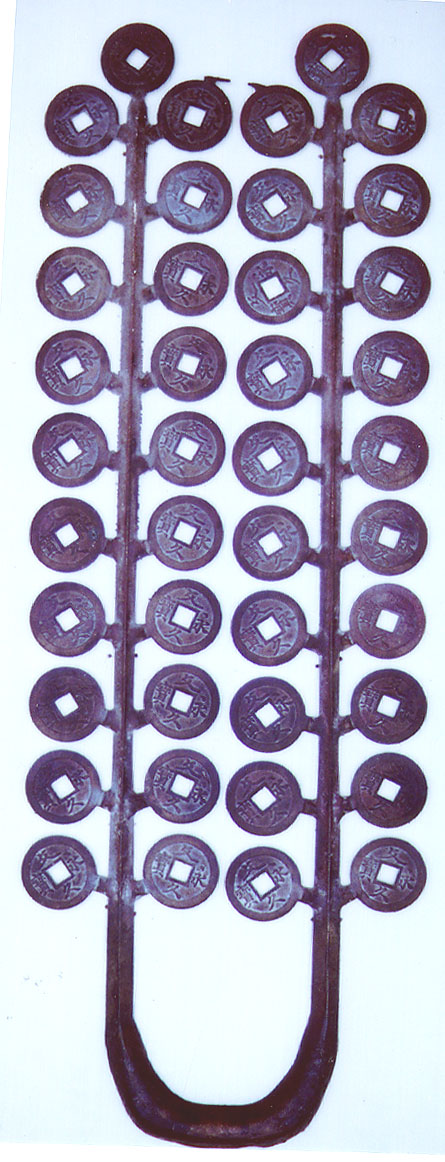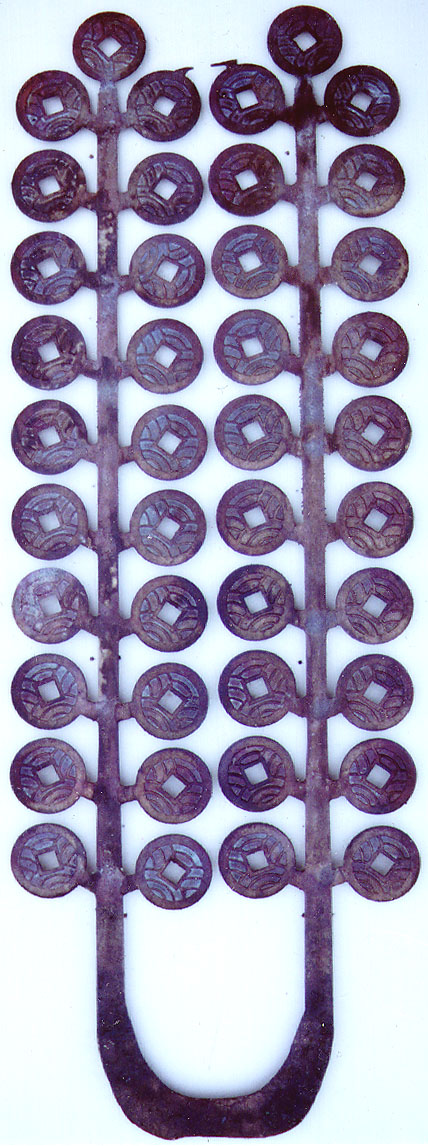|
The coin tree below is an
example of a Japanese Bunkyuu tsuuhou of 1863. It consists of 42 coins
cast on two branches. I realize now that I should have displayed these
pictures upside down--which is the way that they would have been cast.
The metal would have been poured into a point at the bottom of this picture.
The coins are all tilted about 30 degrees to the left or right but there
is one exception, a coin rotated about 85 degrees to the left. What is
noticable with all coins is that a corner of the center hole points toward
where the molten metal will enter. This placement probably encouraged
flow better than presenting the flat side of a coin hole to where the
metal came in. The central bars have a straight triangular shape suggesting
that a bar was first inserted into the front side of the sand mold to
make the path. The smaller paths from bar to coin are more rough and suggest
that they were carved into the sand by an artisan. The paths are flat
and level with the bar on the reverse side, suggesting (just as in the
image on my manufacture page) that the
little paths were cut after the impression of the coins were made in the
sand mold, and cut on one of the two halves of the mold, in this case
the front. I do not know why there is excess copperbetween the two coins
in the top center, but it seems to reveal the existence of a small spacing
bar or a path cut to let air escape from the bottom. Generally thistree
is very successfuly cast, but note that two of the coins on the top right
have holes revealing casting imperfections.
Coin trees are rare and thus
are the object of faking. Whether this tree is real or fake is beyond
my capacity to judge, but at worst it is a very authentic-seeming fake
and a lovely object. The characters are authentic soubun style
and the coins are the correct size and seemingly of the right metal mixture
for a Bunkyuu Tsuuhou.
|


